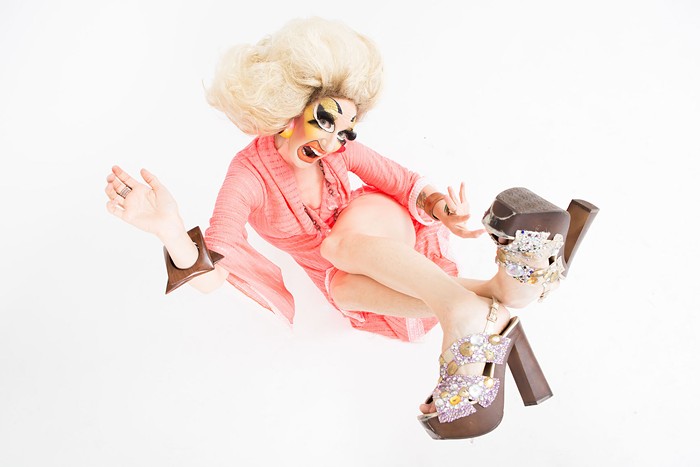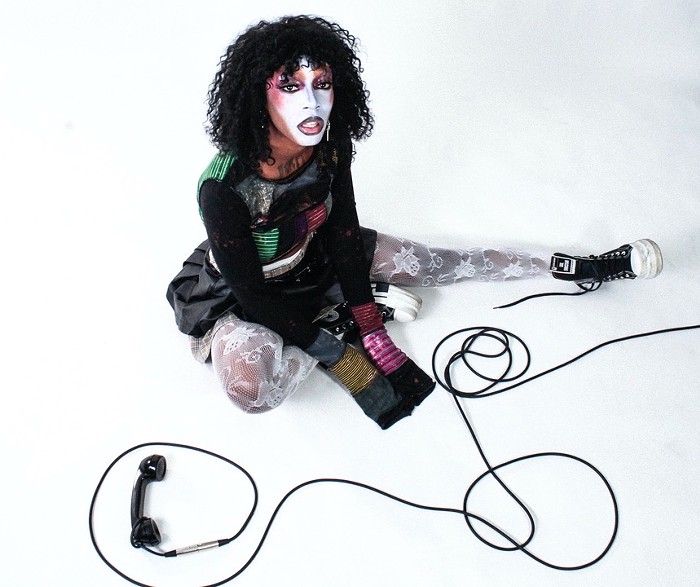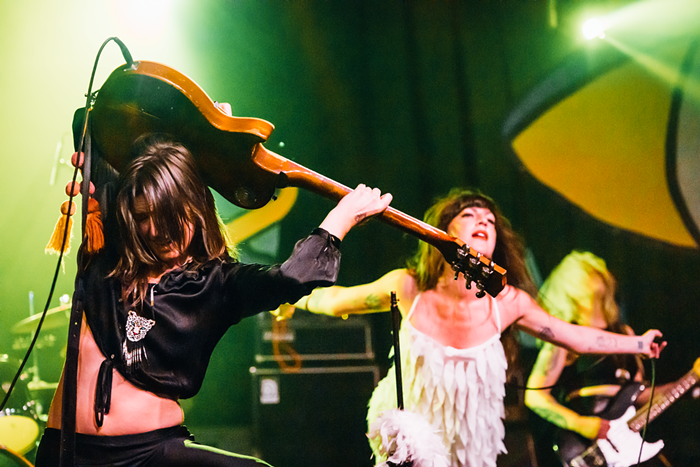What the Hell Is Make Believe Seattle?
Finally, a Film Festival for Fellow Weirdos
The Power of Making People of Color Invisible
Stephanie Syjuco Empowers the Oppressed with Just a Finger
Better, Stronger, Faster
The Seattle Repertory Jazz Orchestra Pays Tribute to the Legendary Oliver Nelson
Where to Pickup a Copy of The Stranger's Spring A+P 2024
Find it at Hundreds of Locations Around Seattle!
Queen of Our World
When Sasha taqwšəblu LaPointe Writes, the Revolution’s Coming
Blowing Minds and Melting Faces
Thunderpussy Celebrate Their Survival with a Surprising Benaroya Hall Takeover
Person of Interest: Arson Nicki
Finally, a Fashion Expert for the People
Six Films You Need to See at Make Believe Seattle
Starring Ethical Vampires, Ridiculous Puppets, and a Dude Who Pretends to Be George Lucas for Funsies
Art, Illness, and Auto Repair
Cherdonna Makes a Compassionate Comeback
Person of Interest: TeZATalks
Harbinger of Horror-Filled Hardcore Pop
It’s Important That the Bug Undulates
How Anida Yoeu Ali Uses Wiggling Worms and Glitter as Forms of Protest
Sincerely Joking
Chastity Belt Live, Laugh, and Love 10 Years On
Your Spring Arts Itinerary
24 of This Season’s Very Best Art, Books, Music, Film, Theater, and Food Events
Tessa Hulls’s Feeding Ghosts Is Instant Canon Fodder
Too Bad She’ll Never Write Another Graphic Novel
Isabel Hagen’s Comedy Strings You Along
How a Juilliard-Trained Violist Found Harmony as a Stand-Up Comedian
Person of Interest: Taha Ebrahimi
Seattle’s Coolest Street Tree Expert
It’s a shame that Tessa Hulls will never write another graphic novel.
Even though Feeding Ghosts represents her first foray into the genre, the 400-page odyssey holds its own in the company of Marjane Satrapi’s Persepolis, Art Spiegelman’s Maus, Thi Bui’s The Best We Could Do, or any of the other major comic works that feature immigrants, the children of immigrants, and refugees processing the generational traumas sparked by the horrors, bloodshed, and diasporas of the 20th century.
No shit. It’s just that good.
Nevertheless, Hulls remains adamant about hanging up the keys. “I will take any bet that anyone wants to make with me on that,” she said in an interview over some above-average fried chicken at Fort St. George in the Chinatown–International District, just a few blocks from her studio at Inscape Arts, where she works when not teaching students how to build stuff at Sawhorse Revolution or cooking with Coyote Central.
Even if the book does mark her as one of the genre’s most able practitioners, you could hardly blame her for calling it a day. Feeding her family’s ghosts with ink was a long, intense, and—perhaps most problematically for the ever-wandering adventurer—all-consuming process. “I have always needed to work in a bunch of different streams simultaneously, and this book has been like a fucking cataract, just one big thing eroding, washing away. I hated it,” she said with a bit of pained laugh.
Seattle has long known Hulls as a gifted polymath. She’s an accomplished painter, an entertaining lecturer (remember her fascinating presentation on the lost history of women bicycle-explorers?), and her CHOP comics went viral in 2020. But she never wanted to be a graphic novelist. And though she does draw comics, she’s never really had passion for the form. “This was the only way I could tell this story, and so I learned for this,” she said.
And learn she did. Over the course of the last 10 years, she consumed the graphic novel canon whole. She traveled countless miles, devoured reams of research, blew through dozens of Japanese ink brush pens, and marshaled a tremendous amount of physical and emotional labor to complete this beautifully hand-drawn, intricately woven, meticulously reported recitation and analysis of her family’s myth, which takes readers from the birth of communist China up to the shores of capitalist Seattle and nearly everywhere in between.
And I’m not being cute when I say “everywhere in between.” The inspiration to begin the project came to her during a solo bike ride up a mountain in Mexico. Over the next decade, she’d retrace her family’s steps in mainland China and Hong Kong, filling up notebooks along the way. She holed up in “probably 10 artist residencies”—in the Seattle area alone, she squatted in her ex’s studio in Rainier Beach and spent time at Gasworks Gallery.
She completed the bulk of the book’s framing during a stay at the Margery Davis Boyden Wilderness Writing Residency, which offers writers a cabin on 94 acres in Southern Oregon so long as they know their way around a chainsaw and promise to do an hour of caretaking per day along the Rogue River. There, physical work begot creative work. As she busied her hands with trail maintenance, her brain found the forms the book wanted to take, and she concocted the “completely batshit crazy” blueprint for Feeding Ghosts.
With no cell phone service, no internet, and only a solar panel with enough juice to keep a computer charged, she strung together the 11 epigraphs that structure the narrative and busted out a 10,000-word outline from which the story would materialize like a photo slowly coming clear.
The story that emerged begins (chronologically) with Hulls’s grandmother, Sun Yi, a journalist who escapes the oppressive cadres of communist China in a false-bottom boat. After reaching relatively calmer waters, she writes a memoir about her experience. The book blows up, but she descends into a mental illness shortly after its success. Her daughter, Rose, witnesses her mother’s dissolution until an incident triggered institutionalization. After a colonial education in Hong Kong followed by a few years enjoying the pleasures of 1970s United States, she takes up caretaking responsibilities for Sun Yi and ultimately settles down in a remote town in Northern California. Hulls grows up there as a member of the only Asian family in town. Cultural and emotional divides lead to major conflicts with her mother, spurring Hulls to adopt a kind of internal cowboy who longs for the frontier—a persona she takes up wholeheartedly. She spends her twenties doing seasonal jobs in places such as Antarctica, Oregon, Ghana, Alaska, and Washington, until she finds herself and her family’s ghosts on that mountain in Mexico.
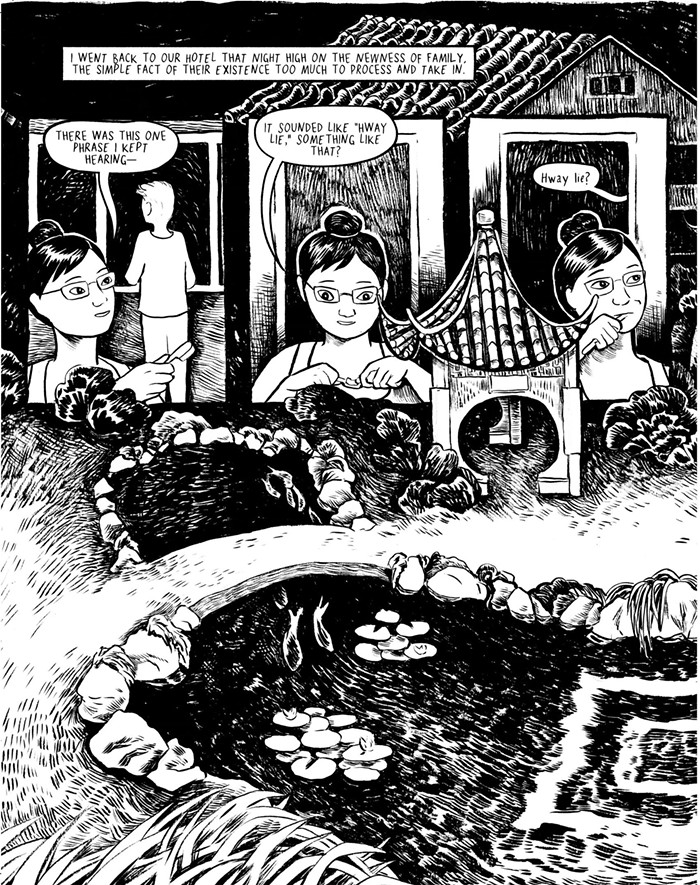
That’s a lot. And Hulls knows it’s a lot. To help the reader keep it all together, Hulls draws herself as a friendly tour guide narrator who reads these stories through various lenses: she plays the historian wary of grand narratives, the journalist hyper-aware of all the angles and facets she could be missing, the sociologist drawing parallels across generations and borders, and the tightly structured maximalist cartoonist who knows her way around literary and visual metaphors.
As she applies all of these lenses, the language and the story itself takes the overwhelming tone of a Type A+ person processing. Hulls’s material is emotional, but her language rarely reads as emotive, a choice that reflects the communication problems she has with her mother, who feels as if Hulls doesn’t feel enough. A page toward the end of the book illustrates this dynamic perfectly. As narrator-Hulls explains a breakthrough moment she had with her mother, she depicts both women sitting in armchairs across from one another. The thought bubble above her head shows her and her mother embracing each other on their knees, crying, “THE DARK! THE DARK!” Meanwhile, the thought bubble above her mother’s head shows Hulls rendered as a robot, saying, “Traumatic incident J398 has been logged and cataloged. Closure achieved. Analyzing next incident.”
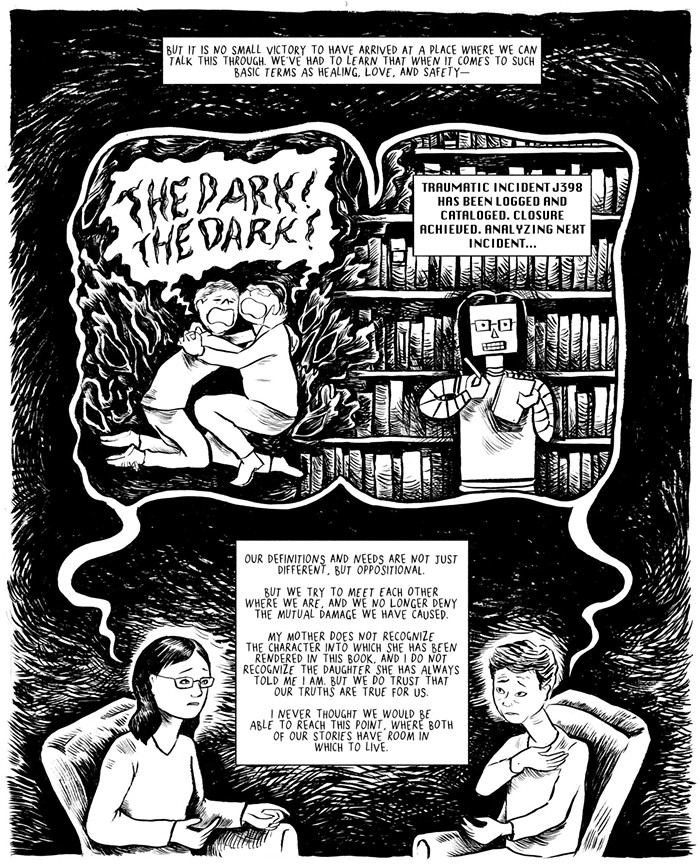
Hulls’s narration isn’t at all robotic, but it is straightforward. This mode gives the book tremendous momentum, clarity, explanatory power, and room for humor. It also sets up the reader for a tiny but tremendously important moment in the epilogue that hit me like an oar to the face.
After 368 pages of first- and third-person narration, Hulls delivers a brief, plainspoken, direct address to her mother that reframes every drop of ink in the book “as my attempt at an embrace,” one that would reach across the cultural and temperamental distances that separate them. That moment recasts every mile traveled, every frigid night in the studio, every crumpled page, every frown she adopted on her own face so she could more accurately draw the frown on a character’s face, practically every second of the last 10 years as an extraordinary act of love delivered to her mother in a language she could understand.
(As a Jew, I now believe this is what Mom must really be asking for when she says, “You know, you never call.”)
Jokes aside, Hulls said she began the book project resigned to the fact that her mom would never see the compassion and love she holds for her. “Then hell froze over, and she did see that,” she said. Now, they’re in a place where things remain complicated, but Rose now knows she’s loved.
So, as far as Hulls is concerned, her mission was accomplished long ago, which makes perhaps the hardest part of this process for her even harder: promoting the book.
In an Instagram post a little while ago, she compared the work of promoting Feeding Ghosts to carrying around a corpse. She’s quick to recognize the “extraordinarily privileged position” of landing a book deal with a Big Five publisher who put up a “hefty advance,” but she’s just not cut out for the work of turning herself into a billboard. Still, she feels a sense of duty to try to help make the project succeed. “Maybe that pressure is in the zeitgeist more than from my publisher, because I see everyone just pushing so fucking hard, so it doesn’t feel like it’s an option not to,” she said.
Despite the ick she feels about the publicity, she welcomes the road. She looks forward to talking to people about the relationship they have with the book “without feeling like it needs to continue to be the guiding force in my life.” She’ll present Feeding Ghosts at Elliott Bay Books on Tuesday, April 23.
Then she’ll ride the wave until November, when she plans to move to Juneau, Alaska, as a present she wants to give herself for her 40th birthday. There, she’ll return to her natural, feral state. And then, after some time on autopilot, return to creative work on her own terms.
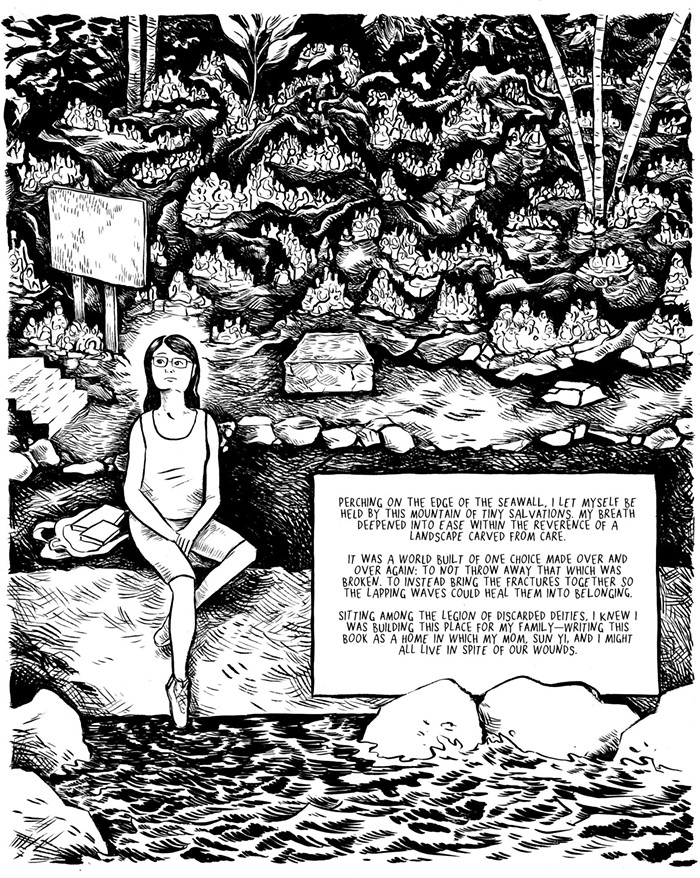
See Tessa Hulls at Elliott Bay Book Company Tuesday, April 23, at 7 pm with Michelle Peñaloza and Jane Wong.


